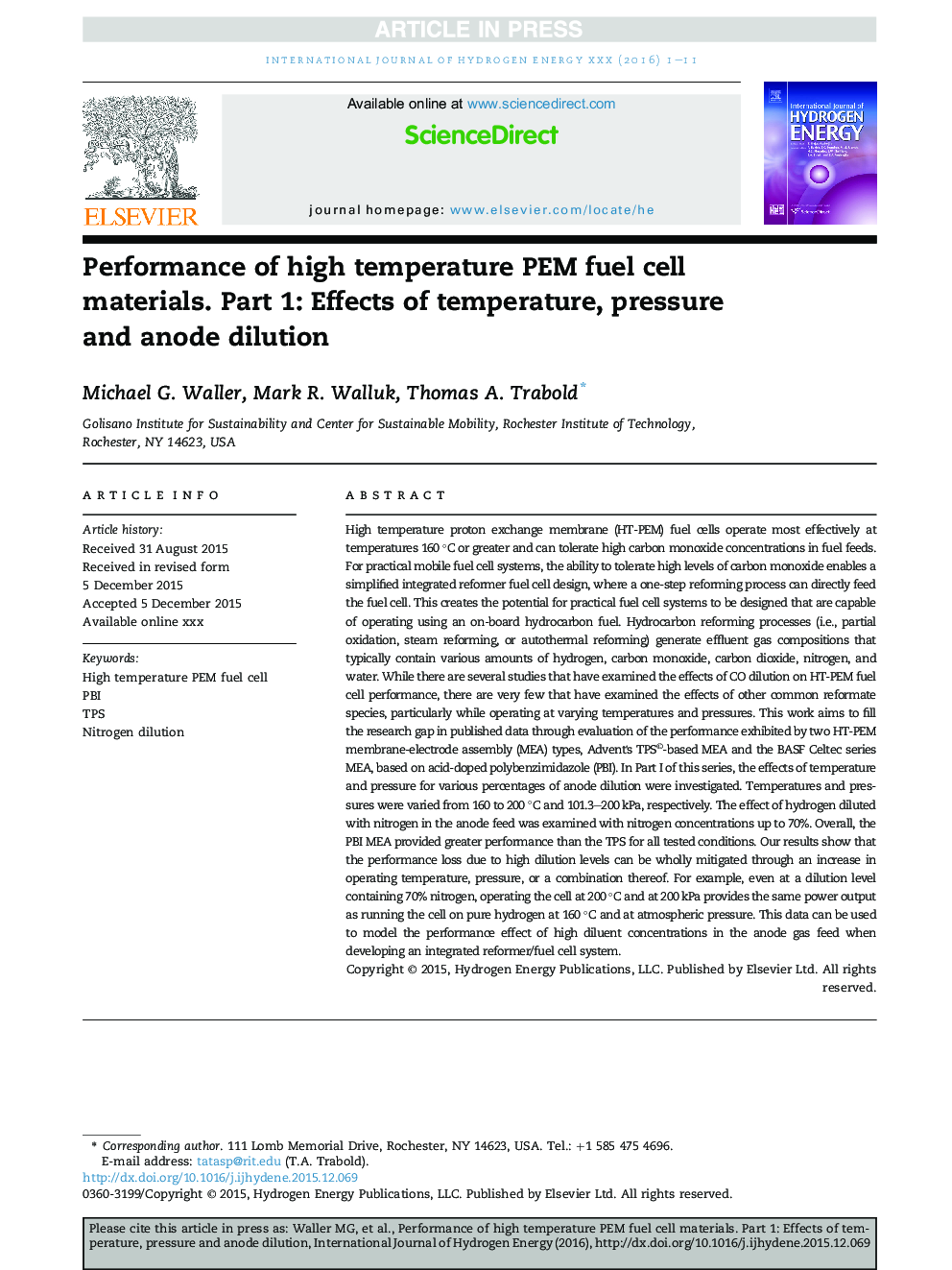| Article ID | Journal | Published Year | Pages | File Type |
|---|---|---|---|---|
| 7712349 | International Journal of Hydrogen Energy | 2016 | 11 Pages |
Abstract
High temperature proton exchange membrane (HT-PEM) fuel cells operate most effectively at temperatures 160 °C or greater and can tolerate high carbon monoxide concentrations in fuel feeds. For practical mobile fuel cell systems, the ability to tolerate high levels of carbon monoxide enables a simplified integrated reformer fuel cell design, where a one-step reforming process can directly feed the fuel cell. This creates the potential for practical fuel cell systems to be designed that are capable of operating using an on-board hydrocarbon fuel. Hydrocarbon reforming processes (i.e., partial oxidation, steam reforming, or autothermal reforming) generate effluent gas compositions that typically contain various amounts of hydrogen, carbon monoxide, carbon dioxide, nitrogen, and water. While there are several studies that have examined the effects of CO dilution on HT-PEM fuel cell performance, there are very few that have examined the effects of other common reformate species, particularly while operating at varying temperatures and pressures. This work aims to fill the research gap in published data through evaluation of the performance exhibited by two HT-PEM membrane-electrode assembly (MEA) types, Advent's TPS©-based MEA and the BASF Celtec series MEA, based on acid-doped polybenzimidazole (PBI). In Part I of this series, the effects of temperature and pressure for various percentages of anode dilution were investigated. Temperatures and pressures were varied from 160 to 200 °C and 101.3-200 kPa, respectively. The effect of hydrogen diluted with nitrogen in the anode feed was examined with nitrogen concentrations up to 70%. Overall, the PBI MEA provided greater performance than the TPS for all tested conditions. Our results show that the performance loss due to high dilution levels can be wholly mitigated through an increase in operating temperature, pressure, or a combination thereof. For example, even at a dilution level containing 70% nitrogen, operating the cell at 200 °C and at 200 kPa provides the same power output as running the cell on pure hydrogen at 160 °C and at atmospheric pressure. This data can be used to model the performance effect of high diluent concentrations in the anode gas feed when developing an integrated reformer/fuel cell system.
Related Topics
Physical Sciences and Engineering
Chemistry
Electrochemistry
Authors
Michael G. Waller, Mark R. Walluk, Thomas A. Trabold,
